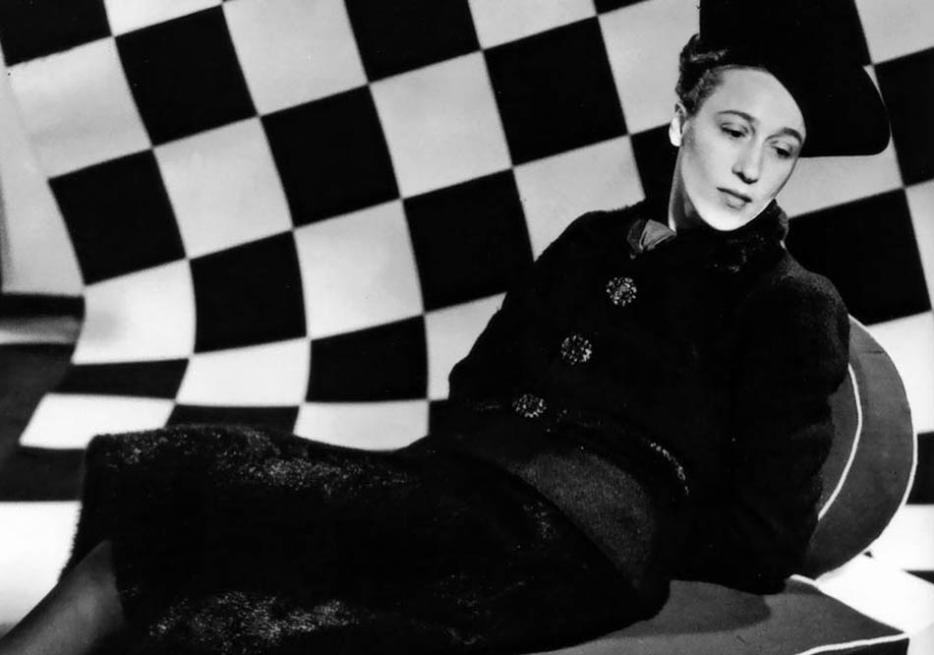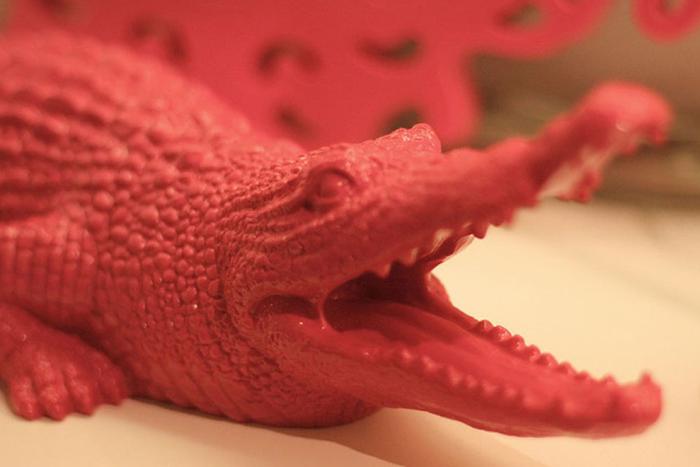The only piece of clothing I’ve ever had made for me was my prom dress. It’s long and vampy and flaming scarlet, like something Rita Hayworth would wear. It’s still hanging in the closet of my old bedroom at my mother’s house, and when I go home I ritually try it on and stand on the edge of the bathtub to look in the mirror and gauge how far I’ve come in life. It’s odd to inch back inside something that came into this world as a perfect imprint of me, like a snake struggling back into an old skin.
Technically, the dress wasn’t quite made for me—it was made over for me. My sister chose the fabric and the pattern, and the seamstress in our hometown made it for my sister to wear to her prom three years before me. My mother and I both hate shopping, and after a long day of dragging around town tugging at snaggy velvet and bristling taffeta, we decided to hell with it and went home to see if my sister’s dress could fit me.
We are the first generation for whom made-to-measure clothes are exotic. In her new book Shocked: My Mother, Schiaparelli, and Me, Patricia Volk describes accompanying her glamorous mother, Audrey, on a mink coat-buying expedition to “our family furrier” in Manhattan in the 1950s:
Audrey tests the skins, flailing them above her head like semaphores. From that she can tell what the mink ate, its sex, general health, how old it was when it died and if it lived in the wild or spent its grim life cramped in a cage. Once she has culled enough happy healthy female pelts, she raises each one individually to her lips. She closes in as if she is about to kiss the fur but at the last moment blows on it instead. Blowing bends the hairs. She’s searching for a white hair, one at least, proof the pelts are natural, not dyed.
Audrey is instructing her daughter in a lost consumer art: judging quality.
Over the millennia, we have covered our nakedness in fur, hide, leaves, feathers, shells, and bone. We’ve pounded flax fibres, woven hemp, spun silk, and carded wool. Then we cooked dimethyl terephthalate and ethylene glycol at 210°C and came up with polyester; we spun a slurry of acrylonitrile and methyl acrylate with sulphuric acid and filtered it to make acrylic.
For almost all of that time, we made our clothes ourselves, or someone who knew us made them. The idea of covering a person in a garment made in ignorance of the shape of his or her body was a dubious brainwave of the nineteenth century. In the U.S., the Civil War required that someone churn out an army of blue uniforms, and at first these were custom-made by tailors sewing in their homes. Then, as the war went on, manufacturers cashed in on the demand by building factories where coats and trousers were made according to a few sets of measurements drawn from small, medium, and large soldiers—the first standard sizing.
Women’s clothing took longer to become standardized. The first ready-to-wear garment produced for North American women was the shirtwaist, a long-sleeved white blouse that buttoned up the front. By 1910, ready-to-wear was an industry; by the 1930s, Montreal’s garment industry employed more people than steel and iron work or meat packing.
And the industry has changed very little since Jewish and Italian immigrants ruined their eyesight bending over piecework in the factories of New York and Montreal, bringing home $6 for a 70-hour work week. The collapse of the clothing factory in Bangladesh on April 24th, in which, at last count, 390 workers were killed, is the worst garment industry accident in history—but not the only one. A similar collapse of the Pemberton textile mill in 1860 in Massachusetts killed 145, and 146 people died in Manhattan’s 1911 Triangle Shirtwaist Factory fire.
All for the sake of ill-fitting clothes. Dresses and jeans and shirts made Platonic, each form imagined from the generalized shape of the human figure but bearing only an approximate relationship to the contours of the real body on which it is destined to sag, stretch, or bunch. We search through the racks for the closest thing to a fit, and leave the dressing room shamefaced at how little our bodies conform to our clothes.
Knowledge of what makes for durable, quality clothing—Audrey and her minks—is no longer what guides North American shoppers. Standing on the subway platform today at Dufferin station, I looked down at the spring shoes I was wearing for the first time this season. Upscale maryjanes, they’re red like my prom dress, but haven’t aged as well. I bought them only last year, but the colour on the buttons has already worn off so you can see the glint of metal underneath. The toes are peeling. A woman in a dark zippered hoodie with a long black braid stopped and looked down at my shoes. “Oh, those are nice,” she said. She had what may have been an Indian accent. “You got them from Wal-Mart?”
“No, I didn’t,” I said. “I bought them...somewhere, I actually can’t remember.”
The woman frowned. “Not from Wal-Mart?” she said incredulously.
I shook my head, and she gave me a puzzled look before moving on down the platform. By the end of the day, I had blisters.






